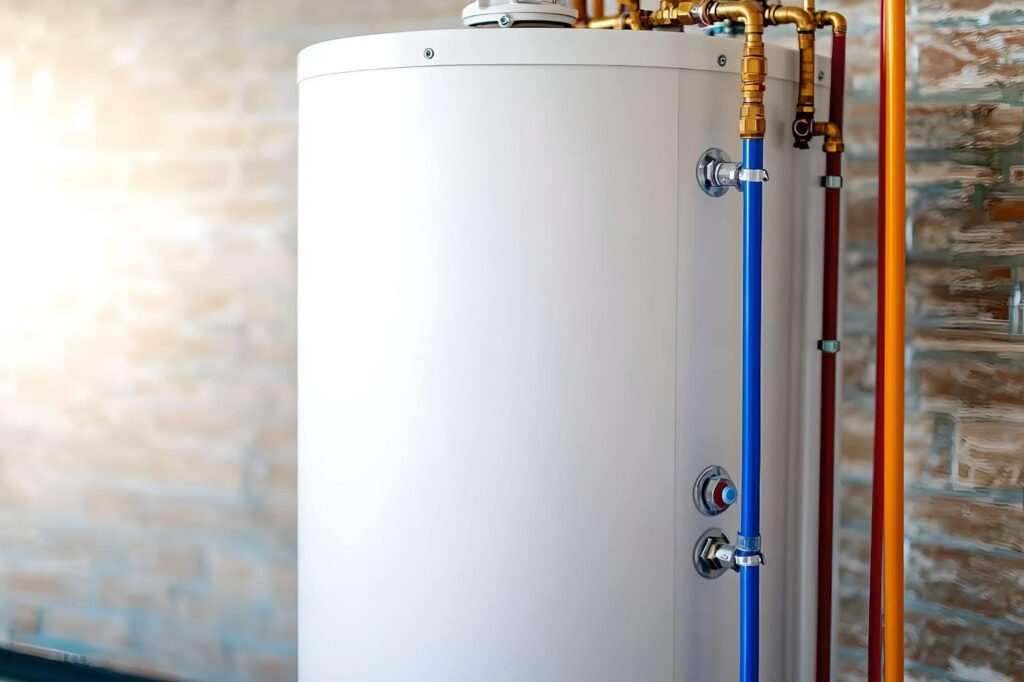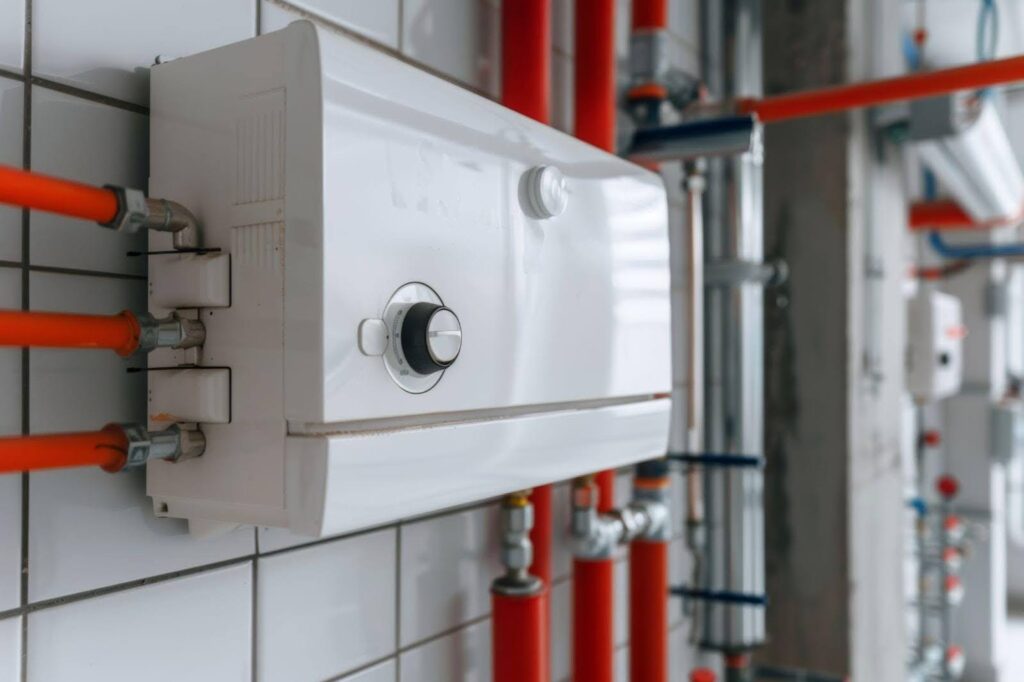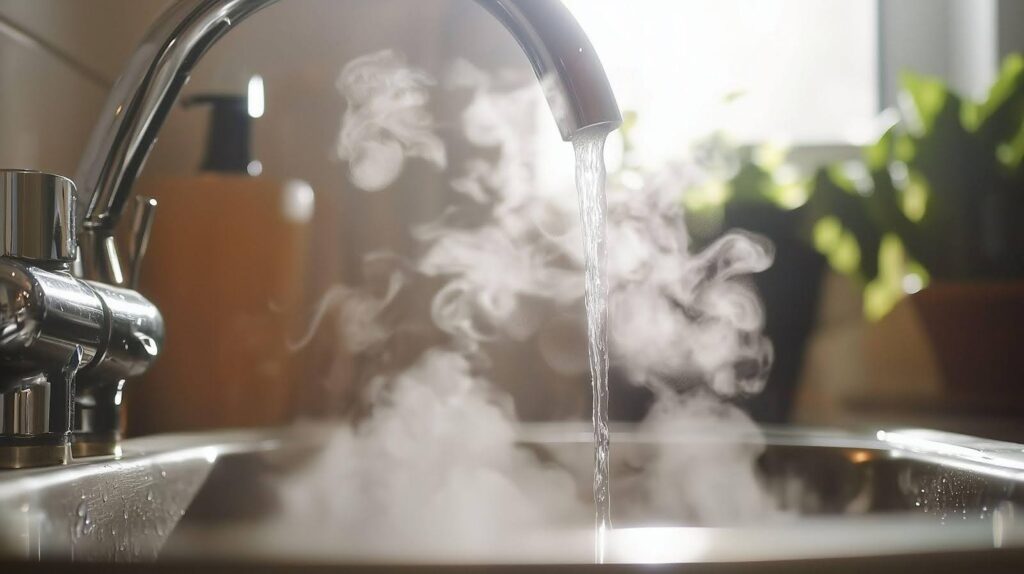Water heater maintenance is one of the most important tasks for keeping your home comfortable and your family’s routine running smoothly.
From morning showers to late-night laundry, your water heater works hard every day. Skipping care can lead to costly water heater repair and unexpected breakdowns.
The good news is that you don’t need to spend hours on upkeep. Simple, practical water heater maintenance tips will keep your system efficient, safe, and reliable.
In this guide, we’ll share quick, easy steps for busy families to extend the life of their water heater, spot warning signs early, and know when it’s time to call a professional.
With a little routine attention, you can enjoy peace of mind and hot water on demand, year after year.
Understanding how your water heater works
Before diving into maintenance, it helps to understand the basics of how your water heater functions. Knowing the type of system you have — tank or tankless — makes it easier to care for it and spot potential issues before they become bigger problems.

Tank water heaters
Tank water heaters are the most common type found in households. They store large amounts of water (usually 30–80 gallons) inside an insulated tank. Cold water enters through an inlet pipe, and heating elements (electric) or a burner (gas) warm the water to the set temperature.
The heated water then rises to the top of the tank, ready for use whenever you turn on a faucet. These units keep water hot at all times, which makes them convenient but also more prone to sediment buildup over time as minerals settle at the bottom of the tank.
Tankless water heaters
Also called on-demand water heaters, tankless units heat water only when needed. Instead of storing hot water, they use high-powered burners or electric coils to heat water instantly as it flows through the system.
This makes them more energy-efficient since they don’t maintain a large reservoir of heated water. However, tankless systems require regular descaling to prevent mineral buildup in the heat exchanger, especially in homes with hard water.
Why this matters for maintenance
Understanding your system type is the first step to proper care. Tank models require regular flushing and anode rod inspections to prevent corrosion, while tankless units benefit from routine descaling and filter checks. Knowing how your water heater works ensures that maintenance is tailored to your system’s specific needs, keeping it reliable for your family’s daily routines.
Set the right temperature
One of the quickest and most effective water heater maintenance tips for busy families is making sure the thermostat is set to the right temperature. Many water heaters come pre-set at a higher level — often around 140°F — but lowering that to 120°F offers multiple benefits.
Why 120°F is the sweet spot
At this temperature, water is hot enough for daily needs like showers, dishwashing, and laundry, but not so hot that it risks scalding skin — especially important in households with children. Lowering the temperature also reduces wear on the heating elements, helping your system last longer, and can cut your energy costs by up to ten percent.
How to adjust your water heater temperature
For tank water heaters, locate the thermostat dial on the side of the tank (sometimes hidden under an access panel). Turn the dial until it points to 120°F.
For tankless water heaters, use the digital control panel to adjust the temperature setting directly.
It’s a task that only takes a few minutes but makes a big difference in safety, efficiency, and comfort for the whole family.
Flush the tank to reduce sediment buildup
Over time, minerals and debris from your water supply settle at the bottom of your water heater’s tank. This sediment buildup makes the system work harder to heat water, reduces efficiency, and can cause popping or rumbling noises as the heating element struggles against the layer of debris.
Left unchecked, sediment shortens the unit's lifespan and raises energy bills — something busy families definitely want to avoid.
Why flushing matters
A quick flush removes this sediment before it hardens and becomes difficult to clear. Even draining a few gallons of water from the tank every few months can make a difference. A full flush once a year is ideal, especially in homes with hard water or high usage.
How to flush your tank
- Turn off the power or gas supply to the water heater for safety.
- Connect a garden hose to the drain valve at the bottom of the tank.
- Run the hose outdoors or into a floor drain, then open the valve and let a few gallons of water flow out.
- Close the valve and remove the hose once the water runs clear.
- Restore power or gas and allow the tank to refill.
This process takes only 15–20 minutes and helps keep your water heater running efficiently. For a deeper clean, consider scheduling a professional flush once a year.

Check and replace the anode rod
The anode rod is one of a water heater's most important but often overlooked parts. Its primary job is to prevent the tank from rusting by acting as a sacrificial component.
Made from materials like magnesium or aluminum, the anode rod attracts the minerals and corrosive elements in water that would otherwise attack the tank’s steel lining. Over time, the rod slowly deteriorates as it does its job.
Why checking the anode rod matters
If the anode rod is completely consumed and not replaced, corrosion starts eating away at the inside of the tank. Once the tank itself begins to rust, there’s no easy repair — replacement becomes the only option.
Regularly inspecting the rod can catch wear before it’s too late. A healthy anode rod can extend the life of your water heater by several years, saving you from the cost of early replacement.
When to replace it
An anode rod should be checked every one to two years. If it’s more than 50% worn, pitted, or coated in calcium deposits, it’s time for a replacement. In homes with hard water or high hot water usage, rods may wear out faster and need replacing more often.
Why we recommend professional help
Replacing an anode rod isn’t as simple as flushing the tank or adjusting the thermostat. It requires special tools to remove and install the rod, and the process can be tricky in tight spaces. That’s why many families rely on professional plumbers to handle this task safely and correctly.
Inspect the pressure relief valve
The pressure relief valve, also known as the T&P (temperature and pressure) valve, is one of your water heater's most important safety components.
Its job is to release excess pressure if the water inside the tank gets too hot or the pressure climbs too high. Without it, your water heater could become dangerous, even leading to tank ruptures or explosions. That’s why checking this valve is a key step in any water heater maintenance routine.
How inspection protects your system
A quick inspection ensures the valve is functioning properly and keeps your system safe. During maintenance, you simply lift the lever on the valve to confirm that water flows out of the discharge pipe. If nothing happens or the valve leaks continuously after testing, it may need replacing.
Catching this issue early prevents bigger problems and saves you from costly water heater repair later on.
Why it’s part of essential maintenance tips
Testing the pressure relief valve is one of the simplest yet most critical water heater maintenance tips. It only takes a minute, but it provides peace of mind that your unit is running safely. Pairing this habit with annual professional servicing helps ensure your water heater stays reliable, efficient, and protected against serious risks.
Keep an eye out for warning signs
Even with regular maintenance, your water heater may show signs that it needs attention sooner than scheduled. Catching these issues early prevents bigger problems, unexpected breakdowns, and costly repairs.
For busy families, keeping an eye out for these warning signs helps you stay ahead of trouble and avoid the stress of losing hot water when you need it most.
Fluctuating water temperatures
If your showers suddenly turn cold or the water heats inconsistently, it could mean sediment is interfering with heating elements or that a thermostat is failing.
Strange noises
Popping, banging, or rumbling sounds are often caused by hardened sediment at the bottom of the tank. These noises signal that the heater is working harder than it should, which shortens its lifespan.
Rusty or discolored water
If hot water comes out looking brown or rusty, corrosion inside the tank may be to blame. This often means the anode rod is worn out — or worse, that the tank itself is deteriorating.
Reduced water flow
A noticeable drop in hot water pressure could point to mineral buildup in the pipes or issues with the heater itself.
Leaks around the tank
Any water pooling near your water heater is a serious red flag. Small leaks can quickly escalate into bigger problems, leading to property damage or complete tank failure.
Rising energy bills
If your utility bills are climbing but your household habits haven’t changed, your water heater may be losing efficiency due to sediment buildup, worn parts, or other hidden issues.
Call Neighborly Plumbing today
Your family depends on reliable hot water every single day, and keeping your system in top shape doesn’t have to be complicated. With the right care and the right plumbing team, you can avoid costly breakdowns, improve efficiency, and extend the life of your unit.
At Neighborly Plumbing, we specialize in comprehensive water heater services tailored to busy families. Whether you need routine maintenance, fast repairs, or expert advice on upgrading to a new system, our team delivers dependable solutions with a focus on quality and peace of mind.
Don’t wait until small issues become big problems. Contact Neighborly Plumbing today for all your water heater needs and enjoy worry-free hot water for years to come.




